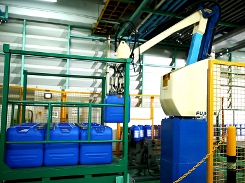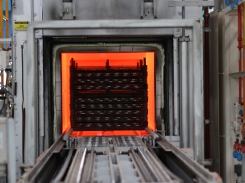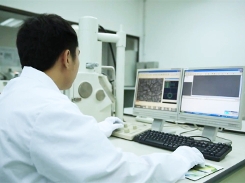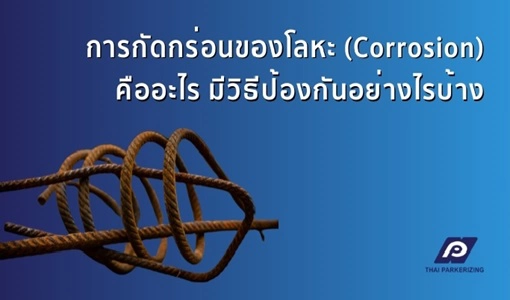- Corporate
- Chemical Products
- Chemical Controller
- Chemical for Paint Booth
- Coil Coating
- Degreasing and Cleaning chemical
- Heat&Cool exchanger (PLATECOIL)
- Hydrophilic
- Manganese Phosphate
- Nano-coating (Pallucid)
- Rolling Oil
- Rust Preventive Product
- Stearate Soap Lubricant/Dry-in-Place Lubricant (PULS)
- Trivalent Chromium/Non-Chromium
- Zinc Phosphate/Iron Phosphate
- Processing Services
- Laboratory Services
- Articles
- What's New
- Contact Us
- Privacy Policy
- E-Service
What is Cathodic Protection? How Does Cathodic Protection Work?
30 August 2021
When the metal is new, everything seems fine. But steel or metal has a disadvantage which is that it is likely to rust over time. This, however, does not refute the strength and durability of steel or metal. Steel and metal can be used as structures or important parts in various applications, and they are still the main materials that are still used today. The key is to find an effective method to prevent or delay rust from forming. Today, we are introducing what’s called ‘Cathodic Protection’ as a major weapon against rust and corrosion. Let’s see what exactly cathodic protection is? and how does cathodic protection work?
What is Cathodic Protection and Cathodic Protection System?

Industrial huge pipes from Elements Envato License
Cathodic Protection is used to protect a metal instrument from corroding off. Corrosion is controlled by making the metal structure become a cathode of an electrochemical cell. By doing so, the lifespan of the metal instrument is extended, and its functionality is also improved. When the metal structure undergoes protection using an anode, it is more durable than when it has not experienced this process.
This technique is mainly done to the metals structures buried in the soil or immersed in water. These structures include those in larger industries like water pipes, fuel pipes, ships, tanks and boats. If the surfaces of these instruments erode, there is the possibility of failure in their functioning, leading to accidents like fuel and water leakage.
What is Sacrificial Anode?
A sacrificial anode is a metal that supplies the current to the buried and submerged metal objects. It is a protective metal for metal structures. These anodes oxidize faster than the metals they are protecting and end up being consumed very quickly. Because of this consumption, they need regular replacement. Some of the commonly used sacrificial anodes are magnesium, zinc, and aluminum.
How Does Cathodic Protection Work?
The question of how cathodic protection works is commonly asked by many. The following statement shows what it takes and how cathodic protection works. The sacrificial anodes should be highly active metals. They should have a more negative electrochemical potential than the metal structure that they are protecting—the amount of current provided by the direct source of current influences the level of corrosion.
Common Types of Cathodic Protection

New brake disc with an anti-corrosion layer from Elements Envato License
There are two basic ways this is achieved, and both methods are effective when used appropriately by experts. These ways are;
-
Galvanic Corrosion Protection
The galvanic corrosion protection method involves protecting a base metal buried in the soil or submerged in water by coating it with another more reactive metal. Rather than the protected metal corroding off the metal covering it undergoes oxidation. Galvanized corrosion protection is commonly applied to pipes that are used for channeling fuel or water.
An example of galvanized protection is when using zinc coating to coat a steel pipe from the outside environment (water or humidity). When corrosion takes place, the zinc will be consumed by the rust in place of the steel. In other words, the zinc layer is sacrificing itself to protect the base. -
Impressed Current Cathodic Protection
The impressed current cathodic protection method is achieved by connecting a direct current power source between the protective anode and protected metal. The negative charge is connected to the protected metal then the positive charge is connected to the protective anode. The current flows from the protective anode to the metal being protected.
It is practical to use this method when there is extensive area coverage. The metal structures are also protected for a very long time. It is also easier to control and monitor the cathode protection system. Due to the high current systems, the effect is excellent hence maximum protection of the metal structures in the underground or in the water.
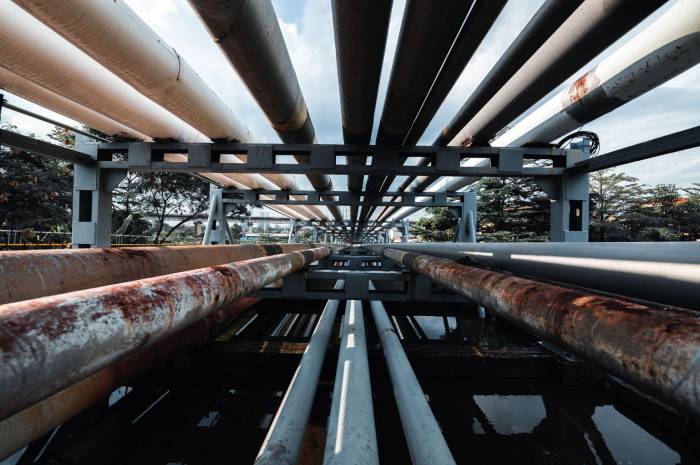
Oil pipeline from Elements Envato License
Installation Methods for Cathodic Protection System
-
Cathodic Protection System Installation Methods
The professionals should install the equipment according to the specifications of the project. While installing the equipment, the process should follow strict directions when arranging the materials. The commonly known installing methods are as following; -
Cathodic Materials - anodes, cable, splices, others
When installing the cathodic protection system, you require cathodic material. These materials include cables, anodes, anodes junction boxes, test stations, resistors, splices, electrodes, among many others. The anodes should have high anode efficiency so that the current produced is readily available for protection. When choosing the sacrificial anodes, you should consider their electrical potential.
The installation of cathodic materials should be handled carefully by the people installing them to avoid damage. The project manager should inspect them to make sure the correct material needed for installation is availableSurface Anode Ground Beds
The surface grounds can be installed either horizontally or vertically then connected to a power source. The shallow anode ground beds are installed where the deep anode ground beds cannot be installed. The shallow anode ground beds are straightforward to establish when a single continuous linear anode is used.
It is very reliable because the anode assembly is manufactured in a factory and tested. With the use of horizontal directional drilling, installation time and costs are reduced. Requirements needed are a backhoe and a horizontally directionally drill if the installation is horizontal, canisters, a trench, a loop system, and junction boxes.
- Deep Anode Ground Beds
This installation method helps in cathodic corrosion protection. Deep ground beds provide more excellent value. The experts should consider ground bed resistance, ground bed output, and system life when considering this installation method.
This method requires a series of work to be done. Drilling the surface is the first thing to do. The installation of an environmental casing is done for shielding. Individual anodes are laid then a coke breeze is pumped. The well is then sealed after the junction box is provided with shunts. - Linear Anode Ground Beds
Installing the linear anode system is more efficient, easy, and fast because no field cutting is required. The linear anodes are the metals to be corroded in galvanic protection. The linear anode is connected to the pipe on the surface.
Conclusion
Although it is almost inevitable for corrosion and rust to form on metal, both ‘Impressed Current Cathodic Protection’ and ‘Galvanic Corrosion Protection’ are the proven and secure ways of protecting pipelines, water treatment plants, storage tanks, and ships. Rusting of metallic surfaces and objects is prevented and delayed when these processes are applied. However, if you are unsure which Cathodic Corrosion Protection is the right rust prevention method for your application? What kind of material should be used? How will the quantity and cost be assessed? Please reach out to us, Thai Parkerizing, by sending your inquiries using our online contact form.
Related products
Tag :


